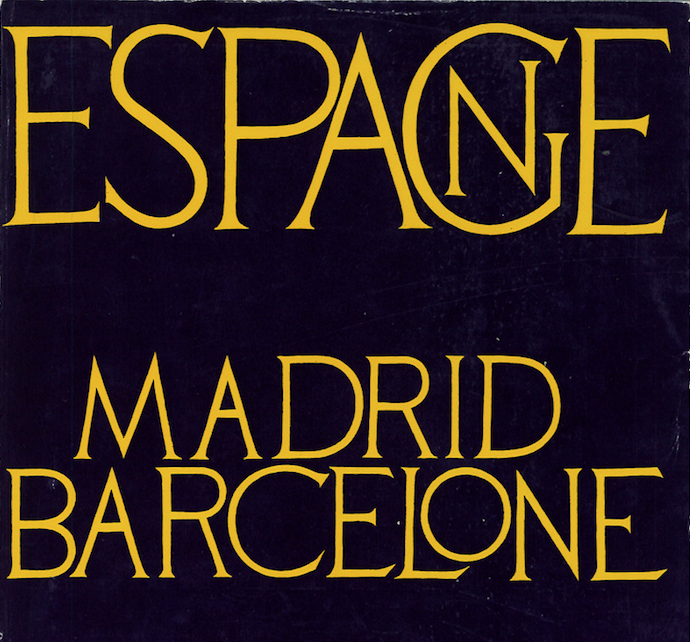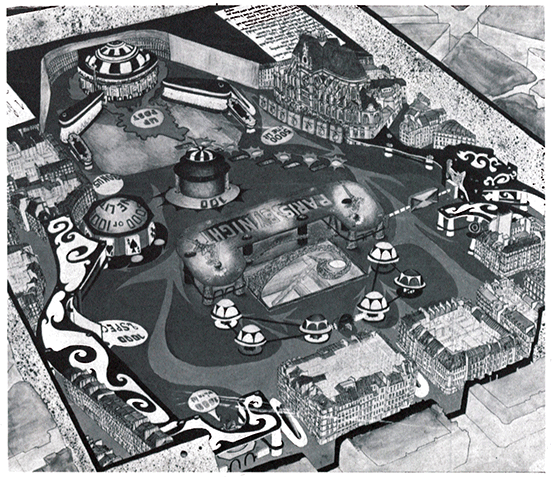AA Retro: Plea for diversity, Jörg Schlaich

” ‘If engineers see themselves as technocrats, mere servants of either client or architect, they can hardly wonder at the bad image of their profession.’ Jörg Schlaich doesn’t mince words when he comments on the abyss that lies between the sunny side of brilliant technical feats and record spans, and the shadow side of humdrum conventional civil engineering works.
Jörg Schlaich pleads for a new art of structure. Over and above technical innovation per se, his many top-performing works are the fruit of a global approach that integrates functional, economic and aesthetic concerns. Schlaich insists on the importance of the pre-project phase, which the engineer must be careful not to deal with in an offhand manner. Like architecture, the art of structure is about prototypes, not series production. The bridges and footbridges presented here are all one-off pieces specific to the sites that they respond to.”
Jörg Schlaich is a professor, and director of the Structural Engineering Institute in the University of Stuttgart. He is one of the associates of Schlaich, Bergennann und Partner. This article is from issue No.335 of l’Architecture d’Aujourd’hui, published in July 2001, dedicated to Crossings.
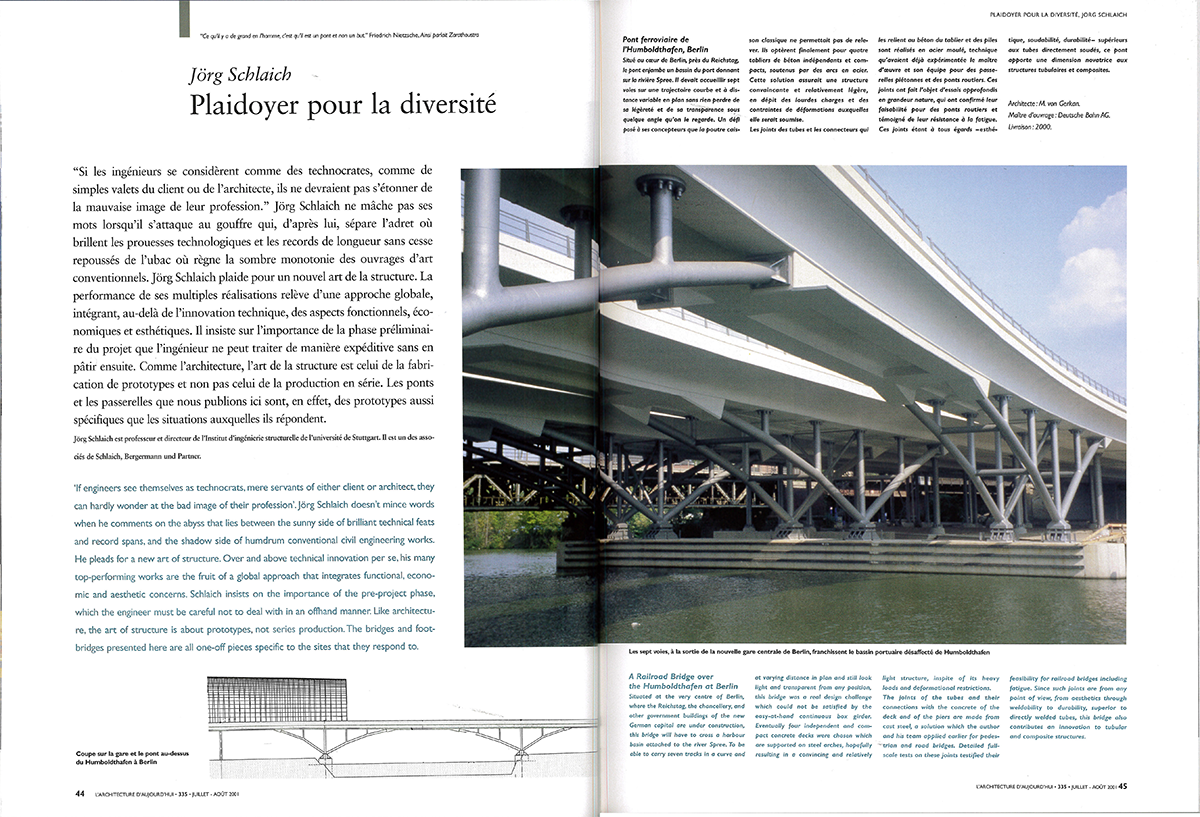
A Railroad Bridge over the Humboldthafen at Berlin
“Situated at the very centre of Berlin, where the Reichstag, the chancellery, and other government buildings of the new German capital are under construction, this bridge will have to cross a harbour basin attached to the river Spree. To be able to carry seven tracks in a curve and at varying distance in plan and still look light and transparent from any position, this bridge was a real design challenge, which could not be satisfied by the easy-at-hand continuous box girder. Eventually four independent and compact concrete decks were chosen which are supported on steel arches, hopefully resulting in a convincing and relatively light structure, inspite of its heavy loads and deformational restrictions. The joints of the tubes and their connections with the concrete of the deck and of the piers are made from cast steel, a solution which the author and his team applied earlier for pedestrian and road bridges. Detailed full-scale tests on these joints testified their feasibility for railroad bridges including fatigue. Since such joints are from any point of view, from aesthetics through weldability to durability, superior to directly welded tubes, this bridge also contributes an innovation to tubular and composite structures.”
Architect: M. von Gerkan ; Client: Deutsche Bahn AG. Delivery : 2000.
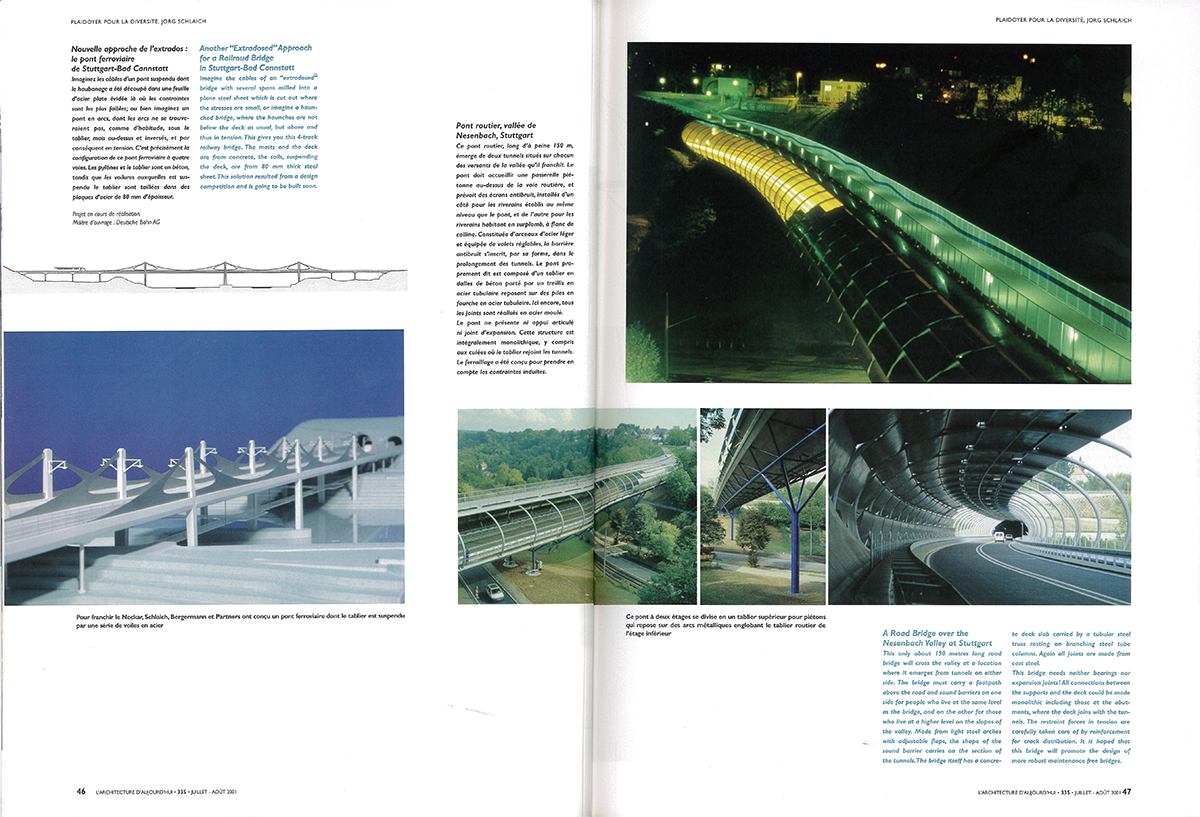
Another “Extradosed” Approach for a Railroud Bridge in Stuttgart-Bad Cannstatt
“Imagine the cables of an ‘extradosed’ bridge with several spans milled into a plane steel sheet which is cut out where the stresses are small, or imagine a haunched bridge, where the haunches are not below the deck as usual, but above and thus in tension. This gives you this 4-track railway bridge. The masts and the deck are from concrete, the sails, suspending the deck, are from 80 mm thick steel sheet. This solution resulted from a design competition and is going to be built soon.”
Client : Deutsche Bahn AG ; Project being built (delivery in 2020)
A Road Bridge over the Nesenbach Valley at Stuttgart
“This only about 150 metres long road bridge will cross the valley at a location where it emerges from tunnels on either side. The bridge must carry a footpath above the road and sound barriers on one side for people who live at the same level as the bridge, and on the other for those who live at a higher level on the slopes of the valley. Made from light steel arches with adjustable flaps, the shape of the sound barrier carries on the section of the tunnels. The bridge itself has a concrete deck slab carried by a tubular steel truss resting on branching steel tube columns. Again all joints are made from cast steel. This bridge needs neither bearings nor expansion joints! All connections between the supports and the deck could be made monolithic including those at the abutments, where the deck joins with the tunnels. The restraint forces in tension are carefully taken care of by reinforcement for crack distribution. lt is hoped that this bridge will promote the design of more robust maintenance free bridges.”
Client : Stuttgart City ; Delivery : 1999
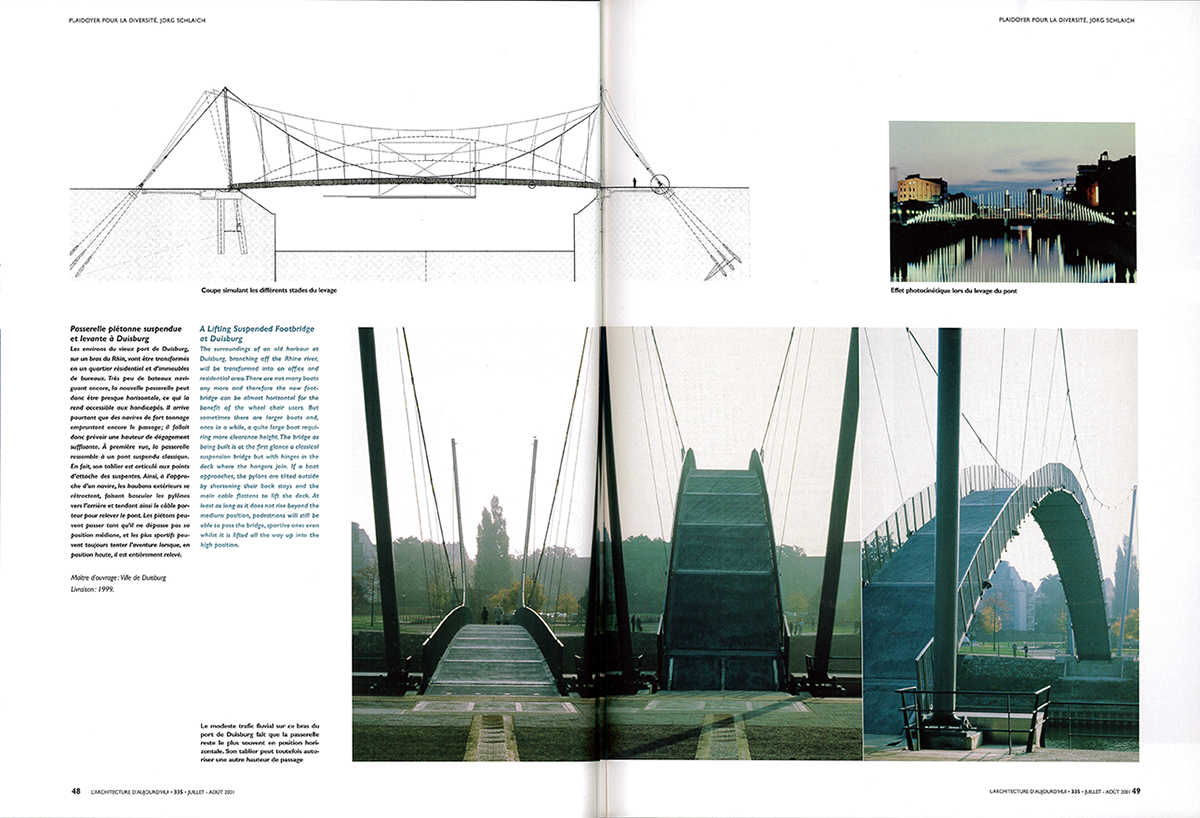
A Lifting Suspended Footbridge at Duisburg
“The surroundings of an old harbour at Duisburg, branching off the Rhine river, will be transformed into an office and residential area. There are not many boats any more and therefore the new footbridge can be almost horizontal for the benefit of the wheel chair users. But sometimes there are larger boats and, once in a while, a quite large boat requiring more clearance height. The bridge as being built is at the first glance a classical suspension bridge but with hinges in the deck where the hangers join. If a boat approaches, the pylons are tilted outside by shortening their back stays and the main cable flattens to lift the deck. At least as long as it does not rise beyond the medium position, pedestrians will still be able to pass the bridge, sportive ones even whilst it is lifted all the way up into the high position.”
Client: Duisburg City ; Delivery: 1999.

